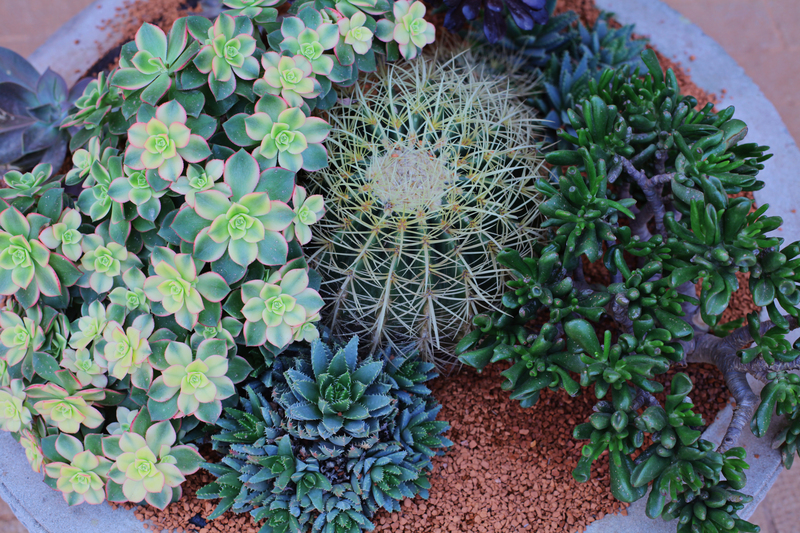Cultivating Your Own Herb Garden: A Beginner's Guide
Posted on 18/06/2025
Cultivating Your Own Herb Garden: A Beginner's Guide
Growing an herb garden at home is an enriching and rewarding experience. Whether you have a sprawling backyard or a sunny kitchen windowsill, cultivating your own fresh herbs is accessible, practical, and enjoyable. This comprehensive guide will walk you through the essentials of starting your first herb garden, covering everything from the right herbs to plant to tips on care and harvesting. By the end of this article, you'll be ready to cultivate fragrant, lush herbs for cooking, tea, and home remedies.
Why Start Your Own Herb Garden?
- Freshness: Homegrown herbs are more flavorful and aromatic compared to store-bought.
- Cost-effective: Growing herbs saves money over buying them packaged or dried.
- Convenience: Imagine harvesting basil or mint seconds before using it in your dish.
- Health Benefits: Herbs packed with vitamins and antioxidants promote wellbeing.
- Therapeutic: Gardening is a relaxing, stress-reducing activity, perfect for beginners and seasoned growers alike.
Starting your own herb garden introduces variety into your culinary and wellness routines, and it's easier than you might think.

Choosing the Perfect Location for Your Herb Garden
An essential first step is selecting where to grow your herb garden. The location you choose can directly impact the success and health of your herbs. Here are crucial considerations:
Sunlight Requirements
Most culinary herbs, like basil, oregano, and thyme, thrive with at least six to eight hours of direct sunlight a day. Indoor herb gardens should be placed near south-facing windows for optimal light. If your home doesn't have enough natural light, supplemental grow lights can be used.
Space Options
- Outdoor garden beds: Ideal for those with backyards or patio spaces.
- Raised beds: Offer better drainage and easier soil management.
- Containers & Pots: Perfect for apartment dwellers or small spaces; portable and customizable.
- Window boxes: Allow you to grow herbs on sills, balconies, or railings.
Soil Quality & Drainage
Well-draining soil is key. Most herbs dislike 'wet feet' and prefer soil that doesn't retain excessive moisture.
- Use organic potting mix or amend garden soil with compost.
- Add sand or perlite for better drainage, especially in containers.
- Test soil pH; most herbs thrive in a slightly acidic to neutral pH (6.0-7.0).
Best Herbs for Beginners
Certain herbs are more forgiving and robust, making them perfect starting points for novices. Here is a selection of the best herbs to grow for beginners:
Top Easy-to-Grow Herbs
- Basil: Versatile in pastas, salads, and sauces.
- Parsley: Hardy, useful as garnish and in soups.
- Mint: Grows vigorously, ideal for teas and desserts.
- Rosemary: Evergreen and aromatic, good for roasts.
- Thyme: Low maintenance, perfect for stews.
- Chives: Mild onion flavor, great for dips and eggs.
- Cilantro: Essential for Mexican and Asian cuisine, quick to sprout.
- Sage: Earthy flavor, used in stuffing and meats.
- Oregano: Mediterranean staple, robust and easy to grow.
Annual vs. Perennial Herbs
- Annuals: Complete their life cycle in one season (e.g., basil, cilantro, dill).
- Perennials: Return year after year with proper care (e.g., thyme, oregano, rosemary, chives).
Mix both types to enjoy a dynamic, ever-changing herbal garden throughout the seasons.
How to Plant Your Herb Garden
The approach to planting herbs can vary depending on space and preference. Below are step-by-step instructions for both indoor and outdoor herb gardens:
Starting from Seeds vs. Seedlings
- Seeds: Offer variety and cost savings but require more patience and care during sprouting.
- Seedlings (Transplants): Convenient and instantly gratifying, these can be purchased from a garden center.
For beginners, using a mix of seeds and seedlings is often the most rewarding approach.
Step-by-Step Planting Guide
- Prepare Containers or Garden Beds
- Ensure pots have adequate drainage holes.
- Fill with quality potting soil or compost-amended garden earth.
- Sow Seeds or Transplant Seedlings
- Plant seeds according to packet instructions, as depth and spacing vary by herb.
- Gently loosen and plant seedlings at the same depth as their nursery container.
- Water Thoroughly
- Initial watering should be gentle to avoid washing seeds away.
- Keep soil moist but not waterlogged, especially during germination.
- Label Your Herbs
- Use tags to identify each herb, particularly in indoor herb pots or crowded beds.
- Position for Maximum Sunlight
- Place containers or beds in your chosen sunniest spot.
Essential Care Tips for Thriving Herbs
To create a lively and bountiful herb garden, you'll need to tend to your plants regularly. Here's how to care for your indoor or outdoor herb garden:
Watering
Consistency is key! Most herbs prefer soil that is kept evenly moist, not soggy.
- Test the top inch of soil; water when it begins to feel dry.
- Morning watering helps prevent disease and evaporation.
- Overhead watering can cause fungal issues; water at soil level when possible.
Fertilizing
- Herbs are not heavy feeders.
- Use an organic, balanced fertilizer monthly during the growing season.
- Avoid over-fertilizing which can lead to lush growth but poor flavor.
Pruning and Pinching
- Regularly pinch back basil, mint, and oregano for bushier plants.
- Cut back flowering stems unless you want to harvest seeds (e.g., coriander from cilantro).
Pest and Disease Control
Most herbs naturally repel pests, but occasionally you may find aphids, spider mites, or powdery mildew.
- Use organic methods like neem oil, insecticidal soap, or a simple blast of water.
- Avoid overhead watering to prevent fungal diseases.
- Remove any affected leaves promptly to reduce spread.
Harvesting Your Herbs
Knowing how and when to harvest herbs ensures the best flavor and encourages more growth.
- Harvest in the morning after dew evaporates and before heat dissipates essential oils.
- Use sharp scissors or pruners to snip stems just above a leaf set.
- Never remove more than a third of a plant at a time.
Frequent, light harvesting stimulates bushy growth and prevents many herbs from going to seed prematurely.
Preserving and Using Your Herbs
Part of the joy in growing your own herbs is reaping their bounty. Don't let excess go to waste--preserve them for year-round flavor!
Simple Preservation Methods
- Drying: Bind small bunches and hang in a warm, airy spot out of direct sun.
- Freezing: Chop herbs, pack in ice cube trays with water or olive oil, then freeze.
- Herb butters & oils: Blend chopped herbs into butter or infuse oils for culinary use.
- Pesto & Sauces: Use surplus basil, cilantro, or parsley in delicious pastes and sauces.
Creative Culinary and Household Uses
- Flavor dishes, salads, and beverages.
- Infuse into homemade teas, syrups, and vinegars.
- Create fragrant bath sachets or potpourri.
- Natural remedies--like chamomile for calming or mint for digestion.
Troubleshooting Common Herb Gardening Issues
Even beginners can successfully cultivate an herb garden by keeping an eye out for these common issues:
Yellow Leaves
Often caused by overwatering or poor drainage. Allow soil to dry moderately between watering.
Leggy Plants
Not enough sunlight is usually the culprit. Move plants to a brighter location and pinch back stems for compact growth.
Unusual Pests or Mold
Isolate affected pots, improve air circulation, and avoid excess moisture.
Seasonal Tips for Year-Round Herbs
- Spring: The best time to sow seeds or plant new herbs.
- Summer: Growth is at its peak; water and harvest often.
- Autumn: Move tender potted herbs indoors before frost. Cut back perennials and mulch garden beds.
- Winter: Grow herbs indoors in bright spots or under grow lights. Water sparingly as growth slows.
Frequently Asked Questions About Starting an Herb Garden
Can I grow herbs indoors all year?
Yes! With good light (natural or artificial), most herbs thrive indoors regardless of season.
Do herbs need fertilizer?
Herbs require less fertilizer than vegetables. Aim for once a month with organic plant food during the main growth period.
How long until I can harvest herbs?
From seed, most herbs are ready to harvest in 4 to 8 weeks. Seedlings are quicker, usually within 2 to 4 weeks after planting.
Can I grow herbs from kitchen scraps?
Many herbs, like basil, mint, and oregano, readily root from cuttings placed in water, making propagation simple and fun.

Top 7 Tips for a Successful Home Herb Garden
- Start simple. Choose 3-5 easy herbs you use most often in the kitchen.
- Prioritize sunlight. Herbs need abundant light for rich flavors and growth.
- Ensure good drainage. Avoid root rot by using pots with holes and amend outdoor beds if necessary.
- Don't overwater. Most herbs prefer being a little dry to too wet.
- Harvest regularly. Frequent pinching and cutting increase productivity.
- Label each herb. Especially important when planting many varieties in one spot.
- Experiment and enjoy! Try new herbs, recipes, and arrangements each season.
Conclusion: Grow, Savor, and Share Your Herb Garden
Creating your very own herbal garden offers a gateway to fresher flavors, healthier meals, and a satisfying hobby. With the right knowledge, you can cultivate fresh herbs all year round--even if you are short on time, energy, or expertise. Start with a handful of your favorite varieties, give them plenty of sunshine and a little love, and soon you'll be savoring the taste (and fragrance) of success!
Ready to get started? Pick up a few pots, seeds, or seedlings, and watch your kitchen and windowsill transform into a lush, aromatic sanctuary.
Happy planting!



